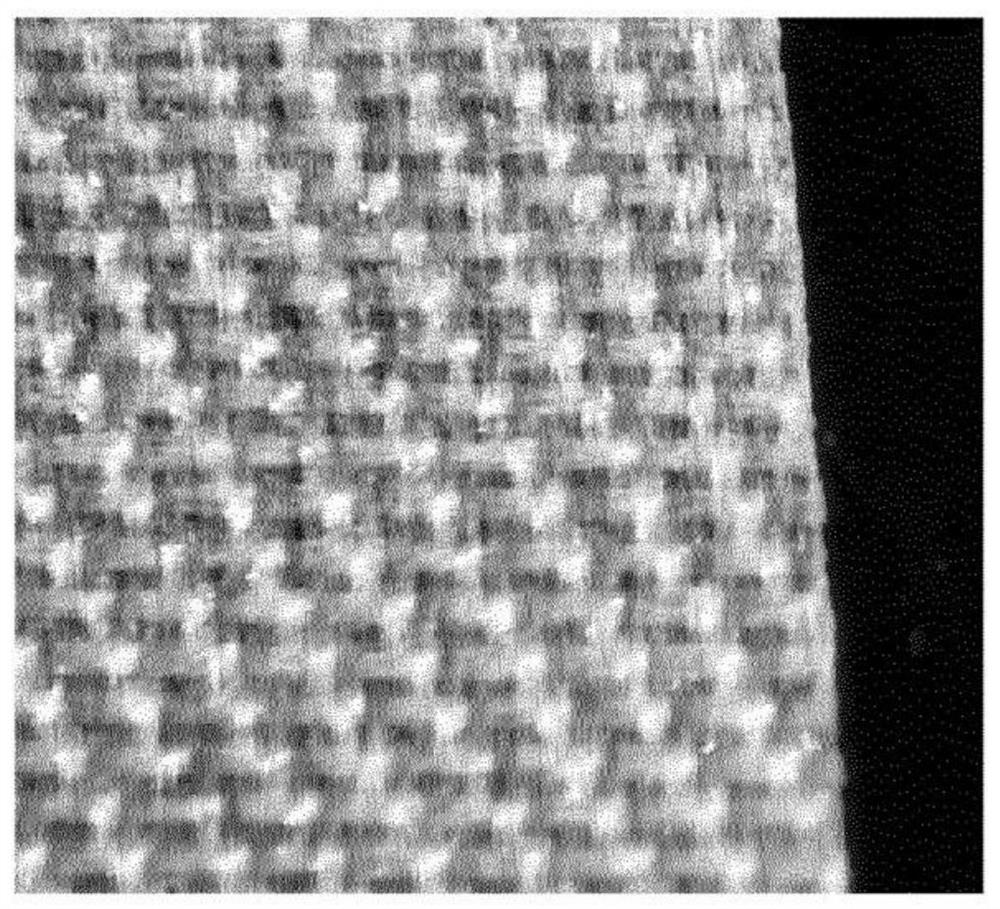Medical implant component comprising composite biotextile and method of making
A technology of implants and textiles, applied in the field of manufacturing such components and medical implants, can solve the problems of insufficient bonding strength of stable materials, increase the embolism and reduction of foreign particles, and achieve the improvement of interaction or biocompatibility. Effect
- Summary
- Abstract
- Description
- Claims
- Application Information
AI Technical Summary
Problems solved by technology
Method used
Image
Examples
Embodiment
[0193] Examples and Comparative Examples
[0194] Material
[0195] The polyolefin textile used as starting material in the examples is made from medical grade low denier UHMWPE multifilament yarn (Dyneema TG 10 dtex; commercially available from DSM Biomedical BV, Sittard-Geleen NL) as warp and weft strands made into a woven fabric with a planar width of 45 mm and a thickness of about 70 μm with a 2*2 twill weave pattern.
[0196] As polyurethane elastomer the following grades were used (commercially available from DSM Biomedical BV, Sittard-Geleen NL):
[0197] - TSPCU 20-80A; thermoplastic silicone polycarbonate polyurethane (thermoplasticsilicone polycarbonate polyurethane), containing silicone in the soft segment and having silicone end groups and having silicone end groups, with a hardness of 80 ShA and an MFR of 52 g / 10 minutes (1.20kg / 224℃);
[0198] - S SPU, polyether urethane containing urea groups and segments with silicone end groups, hardness about 74 ShA. ...
PUM
| Property | Measurement | Unit |
|---|---|---|
| thickness | aaaaa | aaaaa |
| molecular weight | aaaaa | aaaaa |
| tenacity | aaaaa | aaaaa |
Abstract
Description
Claims
Application Information
 Login to View More
Login to View More - R&D
- Intellectual Property
- Life Sciences
- Materials
- Tech Scout
- Unparalleled Data Quality
- Higher Quality Content
- 60% Fewer Hallucinations
Browse by: Latest US Patents, China's latest patents, Technical Efficacy Thesaurus, Application Domain, Technology Topic, Popular Technical Reports.
© 2025 PatSnap. All rights reserved.Legal|Privacy policy|Modern Slavery Act Transparency Statement|Sitemap|About US| Contact US: help@patsnap.com



